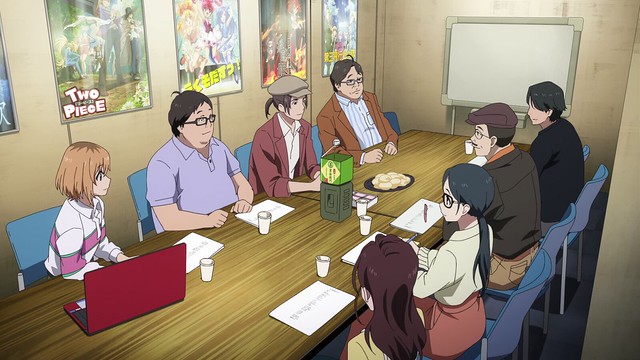In an interview for ASCII, managing director of Studio Trigger, Kazuya Masumoto, shares insights on the recent situation of Japan’s anime industry, changes brought upon by the pandemic and concerns for the future of the industry.
Studio Trigger, often regarded as the successor to Gainax, is the Japanese animation studio behind titles such as Little Witch Academia, Promare and the 2022 Netflix hit Cyberpunk: Edgerunners. The studio’s managing director, Kazuya Masumoto, speaks about recent changes in workflow and recruitment, influenced largely by the COVID-19 pandemic, focusing on the field of Production Management.

Production managers in the anime industry are people who assist core staff of an animation project, coordinate between different departments, manage staff and schedules, follow progress and respond to changes. In other words, it’s a position that comes into contact with all of the different fields and processes involved in anime production.
Masumoto mentions that positive changes in workflow in the anime industry brought on by the pandemic are mostly related to the digitalization of things. As was the case in many businesses, the normalization of online meetings and increase of written communication compared to verbal/in-person communication took place in the anime industry as well, and this contributed to the industry’s most overworked staff’s workloads being lessened significantly. Those who had been previously reluctant to communicate via text and group chats and pushed for everything being communicated in-person were basically forced to change their ways by the situation.

Another point Masumoto mentions as having changed the anime industry greatly comes as a bit of a surprise. File sharing, he says, “caused a revolution” in the workflow. The anime production process requires significant amounts of information to be tracked and shared between different processes, and this, according to Masumoto, had been done by making individual Word and Excel files to store data and sharing it by copying and sending it via email. This had been causing the problem of people not receiving information or missing latest updates. Switching to the use of live documents and spreadsheets made it so that all relevant participants could access all changes in real time, making for a positive change.
Though it is generally known that analogue artists are quite well represented in Japan’s animation industry, according to Masumoto, animators, both key frame artists and in-between artists alike, could be seen rapidly switching to digital work in the last 2-3 years, which was influenced by the need to work remotely.

On the other hand, concerns Masumoto expresses include the rapidly developing shortage of animation staff, which he has noticed in the past 1 to 2 years. He adds, “You often see people saying online how It’s impossible to catch an animator, and really, the situation right now is that reaching out to 100 people results in 1 person responding.” This situation, he says, also puts a strain on production management in terms of recruitment.
Positions in the anime industry are generally not posted on typical recruitment and job listing sites and can mostly be seen only by searching for information on studios’ official websites one by one. Masumoto mentions how a point he is particularly unhappy with is the lack of a singular place that collects and provides such information to those looking for work in the industry. Such a place, he says, would significantly help in raising awareness.

On the other hand, the anime industry struggling with a lack of new animators is a topic that has long been discussed, especially in terms of the less-than-attractive work conditions they are often faced with (Related article). As beginner animators are known to struggle with practically unlivable wages and harsh workloads, talented individuals seem to be finding other paths more attractive, leaving the animation scene struggling to sustain itself.





